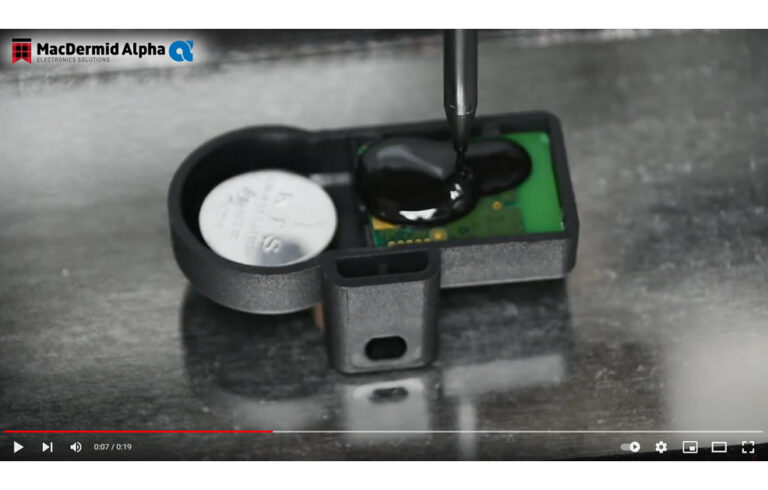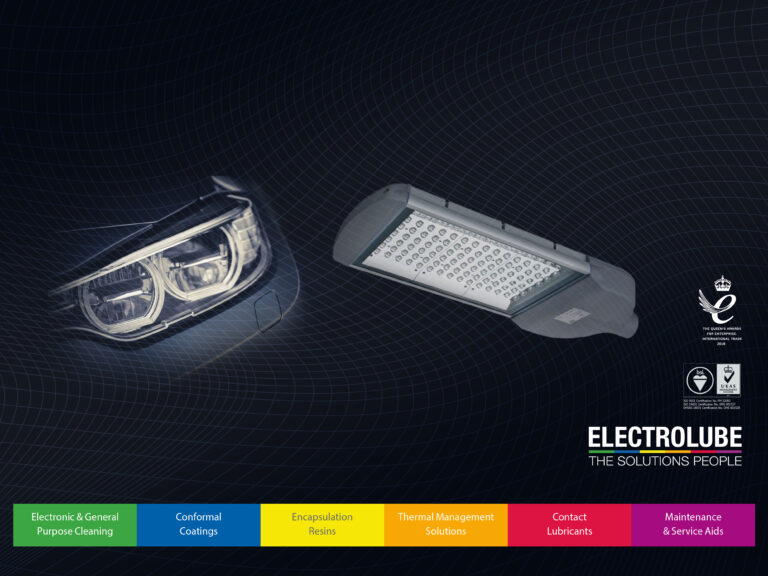Last month, I started this series of blogs on resins by going back to basics, questioning the core rationale for resin choice and application. I will be exploring this area in more detail over the forthcoming months, as there is a great deal more to expand on to assist you in your pursuit of steadfast circuit protection. For this month’s blog, let’s take a closer look at the fundamental chemistries of potting and encapsulation resins and examine how each resin type offers individual properties that can be exploited to maximise performance under a wide range of environmental conditions. When you embark on resin selection, there will be critical points that arise for effective resistance in end use environments, so let’s explore these in a bit more detail.
First and foremost, let’s begin by looking at the arch enemy of electrical and electronic devices, the dreaded ‘moisture’. On top of producing short-circuits, moisture also causes corrosion, which leads to premature deterioration of components. So, what resin is best suited to combatting moisture? Polyurethane resins! These are usually supplied as two-part products that achieve the desired cure when mixed, and provide that all-important moisture resistance, as well as excellent electrical insulation, flexibility and good adhesion to most substrates, both metal and plastic. For more intensive moisture resistance, such as marine applications, there are polyurethane resin systems available that provide exceptional resistance to seawater and temperature extremes, making them an ideal choice for marine applications such as sensor encapsulation. Another good example of a polyurethane resin encapsulated component that requires maximum protection against water ingress outdoors is an LED lighting unit; these resins are also optically clear and UV stable, making them ideal for the task.
Electrolube was tasked with solving an underwater LED lighting application. This is a prime example where encapsulation resins are critical for long-term performance. Water naturally corrodes most metals due to electrochemical oxidation, when a saltwater medium is used, the rate of oxidation significantly increases due to the presence of dissolved sodium and chloride ions.
Technical Support swung into action to resolve the problem. The customer was already using an epoxy resin from a different supplier, this was causing deformations to the plastic housing due to the high exotherm, this needed to be replaced. The resin had to withstand water temperatures between 5 to 40°C, as well as being flame retardant, and needed to be light blue for aesthetic purposes. Importantly, the unit required a flexible encapsulation resin that could resist attack from constant immersion in pool water. Critically, this water could be salt water or fresh water. The unit to be potted was complex, with tiny gaps in the casing, it was essential the resin did not bleed through these gaps and cover the LED lens.
UR5097 was the product of choice, with lots of history providing protection in underwater applications. The only problem was the colour, being black and the fact that UR5097 is designed to flow through tight spaces. With a bit of lateral thinking, the logical solution was to increase the thixotropic nature of the resin, which would prevent the resin bleeding through the gap and simply change the pigment in the resin.
The R&D team produced a material that was still very easy to mix and pour into the unit, with sufficient thixotropy to prevent flow through the gaps and over the LED lens, and altered to the desired colour shade. The solution worked extremely well. Importantly for this application, the resin can withstand both fresh and saltwater ingress and prevent the transmission of metal ions that could attack any metal present. The polymer used in the resin is highly resistant to water even at high pressures experienced as water depth increases. This example demonstrates anything is possible when it comes to finding resin solutions that provide effective resistance to their end-use environments.
If protecting components from mechanical shock and vibration are a concern, then a more flexible cured resin is likely to be the best solution as it adds a level of compliance that helps to insulate the potted components against adverse mechanical movements. In addition to their moisture resistant properties, polyurethane resins also provide this desired level of flexibility and so they are often the first choice for shock and vibration protection. Electrolube UR5118 polyurethane resin finds use in Tyre Pressure Monitoring System (TPMS) sensors; this tough moisture resistant resin easily passes accelerated life testing, critical to resin qualification for TPMS used in the automotive industry. Silicone resins also offer excellent flexibility and will tolerate even higher operating temperatures.
There are epoxy resins that offer good moisture resistance, as well as a fast cure, hardness and high stability, particularly in variable temperature environments. These epoxies also adhere well to most substrates, even difficult substrates with a very low surface tension, such as PTFE, ensuring a watertight encapsulation.
You might also need to protect electrical or electronic components from encountering chemicals, including acids, alkalis, solvents and other substances that pose a threat to delicate circuits and components. Chemical resistance is very much the territory of epoxy resins, although some of the stronger polyurethane products, as well as some silicone-based formulations, will provide a degree of protection. Many epoxy resin products are effective at protecting units that undergo frequent or permanent immersion in solvents. Electrolube ER2223 epoxy resin, specifically designed to offer high temperature stability and excellent resistance to a wide range of chemicals and oils, is used in fuel level sensors, these sensors are exposed to some of the most hostile conditions and ER2223 is critical to the reliability and functionality required in automotive applications.
Thermal shock can have a devastating effect on electronic components, shortening their operating lives at best and completely destroying them at worst. The adverse effects of thermal stress can be vastly improved by using two-part epoxy resins that have a low coefficient of thermal expansion (CTE), the best solution for those applications that undergo severe temperature cycling or which are likely to suffer thermal shock. Low CTE resins mitigate the mismatch in thermal expansion between the resin, substrate, components and solder joint. Low CTE epoxy resins can provide dimensional stability, protecting the integrity of the whole unit during high and low temperature thermal cycles.
Lastly, it is worth remembering that, aside from providing all the protections listed above, opaque potting and encapsulation resins also conceal what lies beneath. This could provide an effective foil against counterfeiters or those wishing to copy a circuit layout, helping you to protect your intellectual property.
Over the following months I hope to provide some useful tips and design advice that will help make life a bit easier for those who are responsible for making the decisions on protecting components and circuitry. I hope the foregoing will help you regarding selecting the right resin for its end use environment. Look out for my next column, where I will be exploring resin systems in more detail.











